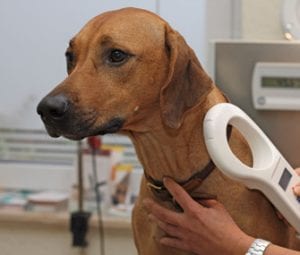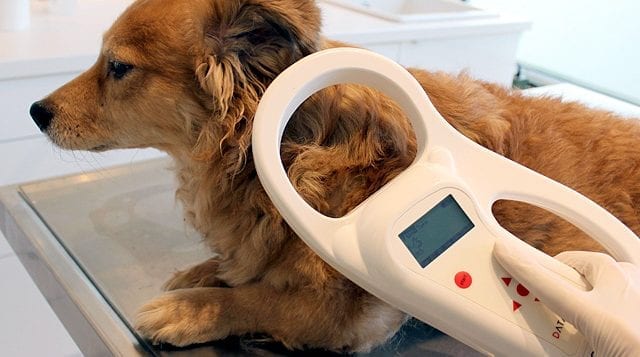Ask the Vet: Using microchips – How to make sure our pets always come home
By Matthew Kearns, DVM

No matter which holiday we celebrate this time of year a pet dog or cat makes a great gift. The bond is almost always immediate and lasts a lifetime. Conversely, the thought of losing a pet is terrible. Since the advent of pet microchip identification, many a lost pet has been returned to its owner safe and sound. There are, however, still some lingering doubts about the safety and efficacy of these chips. I hope to clear that up in this article.
A microchip is an identification chip only and does not contain a power source. Once inserted, the chip will not give off any energy that could be harmful to your pet. The chip is passive, or inert. What that means is, when the microchip scanner is waved over it, the chip receives energy similar to a radio antenna. The chip then gives the scanner back the energy in the way of data, or information.
Pet microchips are very small (about the size of a grain of rice) and can be injected under the skin without any anesthetic. I do not wish to imply that the pets that receive this injection do not feel the needle, but it is far from major surgery. At our hospital we offer to implant the chip at the time of spay or neuter (when the patient is already anesthetized) to reduce the anxiety and discomfort of the pet. These chips do not tend to migrate after implantation and rarely cause any discomfort.

The notion that there is a direct link between microchips and cancer is greatly exaggerated in the media and on the internet. It is true that these chips have been documented to cause a type of cancer called “injection site sarcoma” in lab mice and rats. These animals are very prone to this type of cancer when any material is injected under the skin. To this date there is only ONE documented case of cancer in a dog that was directly linked to the implantation of a microchip.
Older microchips and microchip scanners were not as successful and there were accounts of pets that were needlessly euthanized as a result. However, in a study published in the Journal of the American Veterinary Medical Association (JAVMA) in 2008, the newer chips and scanners reported at least a 90 percent (in some scanners and chips up to a 98 percent) success rate in identifying the chip. Another study published in JAVMA in 2009 approximately 75 percent of dogs and approximately 65 percent of cats that were turned over to shelters were able to be reunited with their owners via the microchip (of those owners that were not reunited 35 percent had disconnected phones and another 25 percent never returned phone calls from the shelter).
If you wish to get a pet this holiday season and wish to find them again if lost, then I would suggest you have a discussion with your veterinarian about microchipping.
I wish to extend a joyous holiday season and a Happy New Year to all the faithful readers of my column. I also wish to thank the editor of the Arts and Lifestyles section, Heidi Sutton, and all the staff at Times Beacon Record News Media for another great year.
Dr. Kearns practices veterinary medicine from his Port Jefferson office and is pictured with his son Matthew and his dog Jasmine. Have a question for the vet? Email it to [email protected] to see his answer in an upcoming column.







